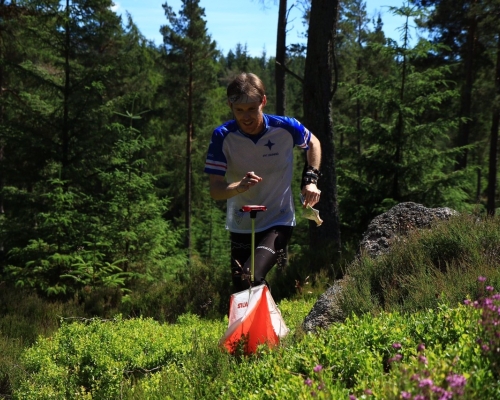Newcomers
How to get started with Orienteering
Orienteering is an outdoor activity where you walk or run a course via a series of controls or checkpoints, using a map for guidance. Most events take place in the Scottish countryside, so you can connect with nature and enjoy being out in our forests and glens. If you prefer towns and cities, you can try urban orienteering, which provides different scenery and challenges.
If you like being active outdoors in Scotland and enjoy a challenging experience, orienteering is the perfect sport for you. You can enjoy it as an individual, a family, or a group. All you need is a pair of trainers and comfortable clothing. Events take place throughout the year and many of these are totally accessible to people of differing levels of fitness and mobility.
What happens at an event
Many events are small and informal. There will always be a friendly face to show you what to do. Once you have entered you will be given a map with your course printed on and a ‘dibber’. This is a very small electronic recording device which you attach to a finger. When you present this to the recording box it instantaneously logs your success in reaching that control. At the end of the course the dibber gives a printout of your total time for the course and a breakdown of the time you took for each leg of the course.
The aim is to select your route to each control point marked on a map as quickly as you can. At these points on the ground, you will find a bright orange and white “kite” and a stake holding the numbered recording device you are looking for.
Everyone starts at a different time, so there is no mass start to worry about and no one will be watching you!
Orienteering maps and courses
Orienteering maps are very different to Ordnance Survey maps. They are very detailed and large scale and show footpaths, fences, streams and many other small features such as small depressions in the land surface. Importantly, they also show the type of landscape around you, such as fields and woodland, and even how thick the woodland is; this is indicated by the colouring on the map.
There are different difficulties of course to work through as you become more experienced. Courses for beginners typically follow paths or other ‘linear’ features. There is no need to be able to take a compass bearing to begin with, or even to have a compass. There is an excellent guide for orienteering beginners complete with explanation of the colour coding system and videos here
Who does orienteering?
Age is no barrier to the fun of orienteering, and family groups often take part in events, walking around some beautiful countryside together. Children from age around 9 can usually manage an easy course on their own, and gives them a huge boost to their confidence and independence.
At the other end of the spectrum, larger events often attract orienteers in their 80s. Larger events have age classes, so that everyone is competing against their own peer group.
Orienteering can, of course, be a highly competitive sport with elite athletes competing at the very top level in world competitions. Most people compete for fun and personal satisfaction with local and neighbouring clubs. Orienteers enjoy the social side of the sport, meeting up with friends at different events, and comparing notes on their courses.
Which events can I come to?
Almost all events have beginners’ courses. The exception is night orienteering which is for those who have mastered daylight navigation!
Some events have a deadline for entering (usually a week before) but most you can just turn up. Details are always on the website of the organising club. Local events on Deeside will either be organised by Maroc or by neighbouring club GrampOC based in Aberdeen.
As well as events, Maroc organises informal training sessions. These are a really good way of learning navigation skills, meeting club members and finding out more about the sport. Training is always tailored for the standard of those who attend.
If you have any queries at all, please contact one of the committee members on our contacts page. They will be delighted to hear from you!
ScotJOS
If you come to an event you may hear about ScotJOS. It is short for the Scottish Junior Orienteering Squad. Youngsters who are enjoying and doing well at orienteering at age around 14, may be invited to join ScotJOS. This is a great opportunity to meet and train with others from across Scotland at regular weekend training camps. For many it marks the start of life-long friendships.
Joining the Club
You are welcome to come and try orienteering up to three times, but if you plan to orienteer regularly you should join Maroc, the British Orienteering Federation and the Scottish Orienteering Association. These bodies are responsible for the management and development of the sport and need the financial support of participants. Most funding is based on the sports membership numbers and participation, so it's important that you are officially recorded as an orienteer - and that you are covered by insurance.
Read more about the benefits of membership on the British Orienteering website
Or follow this link to join online
See other entries Categorised under: Club
